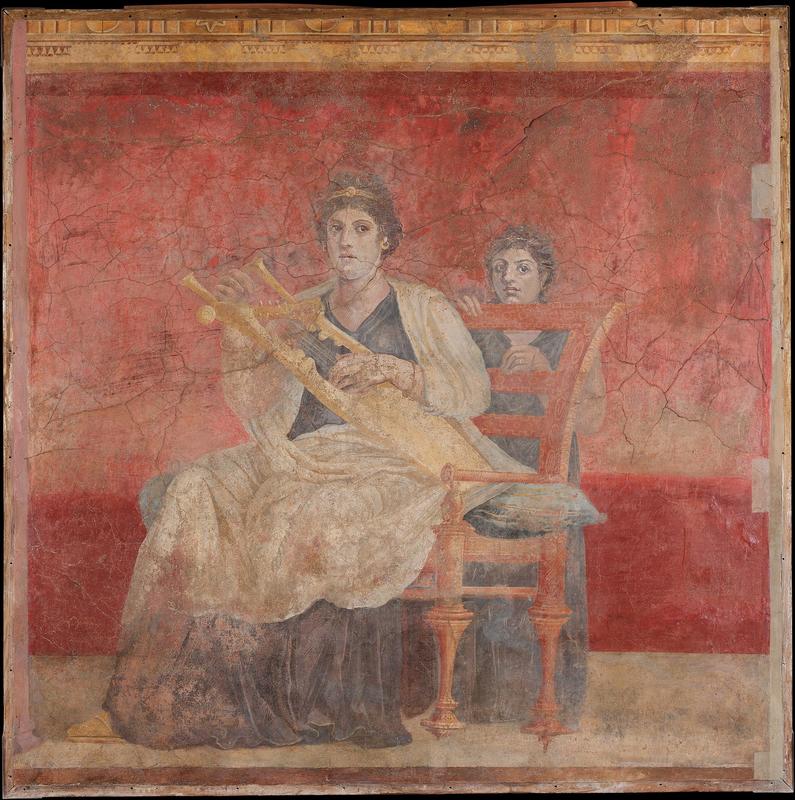More about Wall painting from Room H of the Villa of P. Fannius Synistor at Boscoreale

Contributor
This Roman fresco from the Villa of P. Fannius Synistor is of particular note because it is one the few that still exist.
The fresco was originally painted on the wall of a Roman villa, located in a forest about a mile north of Pompeii. Due to the eruption of Mt. Vesuvius, the entire villa was buried beneath the earth for nearly two millennia. The volcanic earth preserved the work, leaving it entirely untouched and unexposed to air and light until the late 19th century when it was excavated.
This sort of wall art was produced by applying paint directly to wet plaster. As a result, in its original state, the fresco would have actually been pretty durable, as the color would be set in the plaster. However, even this technique would not be able to stand up to the harsh ravages of time. Additionally, the technical name for this type of art is "megalographia" or “large scale painting.” The style is derived from Hellenistic art, from the time when Alexander the Great had conquered the known world. Unfortunately, it is not immediately clear who the subject of the painting is. It has been suggested that it is supposed to be some Macadonian queen, and the girl in the background is the princess. Regardless, it is the style of art that would be most important, as it would have demonstrated the education and worldliness of the owner.
Because so little of this art exists, former historians sometimes operated under the misconception that much of the ancient world was largely unpainted. Artists of the Renaissance and the Neo-Classical period likely saw things structures like the Colosseum and objects like antique statues and assumed they had always been just bare stone. This is evident in paintings like the School of Athens or The Architect's Dream. This couldn’t be farther from the truth.
The Romans had paint everywhere. The number of villas excavated from the ruins of Pompeii were incredibly limited, yet the excavators were still able to find four distinct decorating styles across the various buildings. A reason for this was that wealthier Romans decorated their buildings using marble of different colors. If you weren’t as rich as Caesar himself, this was cost prohibitive, so the common folk turned to this painted plaster method, which would have been a far cheaper way to achieve the same decorative effect.
Sources
- Dr. Jessica Ambler “Roman wall painting styles” Khan Academy viewed on 10/05/2020 https://www.khanacademy.org/humanities/ancient-art-civilizations/roman/…
- Department of Greek and Roman Art. “Boscoreale: Frescoes from the Villa of P. Fannius Synistor.” In Heilbrunn Timeline of Art History. The Met 2000 http://www.metmuseum.org/toah/hd/cubi/hd_cubi.htm
- Website Contributor “Hellenistic-Roman Art (c.27 BCE - 200 CE)” ENCYCLOPEDIA OF ART and CLASSICAL ANTIQUITIES viewed on 10/07/2020 http://www.visual-arts-cork.com/antiquity/hellenistic-roman-art.htm
- Website Contributor “HISTORY OF THE EXCAVATIONS” Pompeii.org viewed on 10/05/2020 http://pompeiisites.org/en/boscoreale/history-of-the-excavations/











